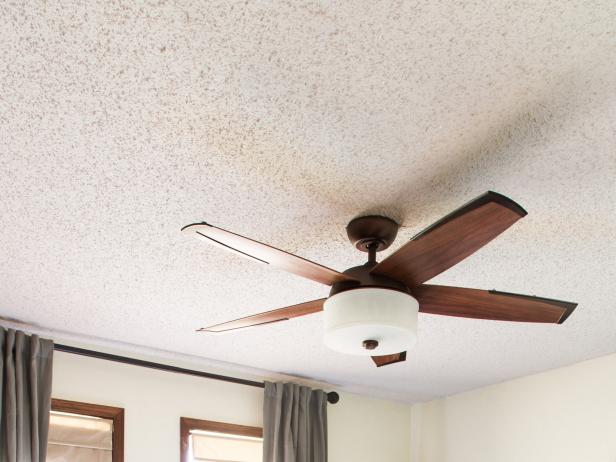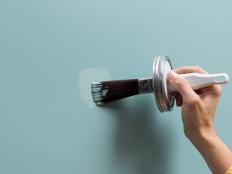What Does Asbestos Look Like and How to Identify It
Nearly 50 years after the first federal ban, asbestos is finally not being used in new residential building materials, but it still exists in millions of homes. Living with asbestos doesn’t automatically make it a problem, but it can become one if we’re not careful.

Millions of Americans have asbestos in one or more building materials in their home. Identifying an asbestos-containing material (ACM) is a challenge because in most applications it’s indistinguishable from a product without it. Certainty comes only with testing, but your home’s age and renovation history, combined with knowledge of the materials asbestos is commonly found in, can help narrow the scope. Addressing asbestos in a residence includes one of three approaches, the first of which is simply leaving it alone.

Rick Osentoski / AP Images
Asbestos has been incorporated into residential building materials for centuries. The older the home, the more likely it is that a component will have asbestos.
Why Are We Living With Asbestos?
Asbestos is the collective name for six naturally occurring fibrous minerals with incredibly handy qualities. Asbestos fibers can be woven, they don’t conduct electricity, and they are resistant to heat, fire and chemicals. Because of the mineral’s strength and resilience, manufacturers spent much of the last century incorporating asbestos into thousands of durable products for commercial, industrial and residential applications, including the building materials used in our homes.
The honeymoon ended when experts realized that asbestos fibers — invisible to the naked eye — can set up shop in the lungs and other parts of the body where they cause serious disease, often arriving decades after exposure (CDC). Particular applications of asbestos started being banned in the 1970s, but it has taken decades to address all the uses of the mineral and we still aren’t finished. EPA’s 2022 proposed ban will eliminate the remaining applications.

Lauren Noess
Drop ceilings and acoustic ceilings are common locations to find asbestos in older residences. Asbestos-containing materials were used extensively for sound insulation, thermal insulation and fireproofing in many parts of the home.
Where in the Home Is Asbestos Found?
Building products containing asbestos are no longer manufactured, imported or distributed in this country, so if your home is brand-spanking new — built with materials produced after 2019 — you need not worry. For the rest of us, one or more home components could contain asbestos, particularly in homes built before 1980. As a general rule, the older the residence is and the less it’s been renovated, the more likely asbestos is present somewhere. Locations include:
- Exterior: In roofing and siding products, including shingles, underlayment, sealants and mastic.
- Attics, walls and ceilings: In insulation (vermiculite insulation in particular), soundproofing materials, wallboard, textured paint (e.g., popcorn), plaster and patching compounds.
- Flooring: In vinyl and other resilient floor tiles, the backing on sheet vinyl and in flooring adhesives.
- Plumbing: In insulation on hot water and steam pipes.
- Heating units: In door gaskets for wood-burning stoves and oil and coal furnaces. Also, in paper, millboard or cement sheets that protect the walls and floors around wood-burning stoves (EPA).
The more recognizable applications include vermiculite insulation (shiny accordion-like pebbles) and the thermal insulation wrap on pipes and boiler systems that look like a white body cast. The rest can be impossible to visually identify, so EPA recommends presuming asbestos is present in any suspect material (EPA). As you might expect, older building products with the longest lifespans, like insulation and flooring, are most likely to contain asbestos.

EPA
Most asbestos-containing materials (ACM) are indistinguishable from products that don’t contain the mineral, according to the EPA. One of the more recognizable applications for asbestos is in the insulation commonly used on hot water and steam pipes in older homes.
At What Point Was Asbestos Out of Homes?
Via a 2019 final rule, asbestos is prohibited in building materials. Through this rule, EPA reinforced existing ACM bans and prohibited any new application or discontinued application from returning to the market before EPA has a chance to review, closing a regulatory loophole. Specific uses of asbestos that we mentioned above were banned at earlier points, making the presence of asbestos in that aspect of your home more or less likely based on the date of home construction or renovation. Earlier bans on residential building materials include:
- 1973: certain spray-on applications, including popcorn ceiling
- 1975: pipe insulation
- 1977: artificial fireplace embers and wall patching compounds
- 1989: flooring felt and roll board (EPA)
It's important to note that the ban years above should not be considered the last years these products were used in homes. Residual stock containing the mineral was sold by manufacturers and used by builders for years after the bans. So, if your home was built in 1979, there is a chance the popcorn ceiling has asbestos. For a home built in 1989? Less so.
Don’t panic if you suspect that a building material in your home contains asbestos. EPA says simply having an ACM in the residence is unlikely to make a person sick. The trouble arises when the material deteriorates or when it is disturbed (EPA). The durability of asbestos — what made it so appealing to begin with — means the fibers are often more resilient than the surrounding material. When the product containing asbestos degrades or is damaged, those problematic fibers are released back into the environment and our air. So, if you’re living with asbestos, what to do about it is primarily determined by the condition of the material.

Tomas Espinoza/Flynnside Out Productions
Popcorn ceiling, as a spray-applied surfacing, was the subject of the first EPA asbestos ban in 1973, but builders continued to use the residual product in homes for years.
When and How to Test for Asbestos
The only way to know for certain if a material contains asbestos is to have samples analyzed by a qualified laboratory. But if the suspected material is intact and likely to stay that way, EPA says do not compromise it by collecting samples for testing. Collecting samples could actually create a risk of exposure that wasn’t present before. The two situations that warrant testing are:
- If you’re planning a repair, remodel or renovation in which material you suspect contains asbestos will be damaged or removed.
- If you discover damaged or degrading material that may contain asbestos.
Many retailers sell asbestos test kits for homeowners to collect material samples themselves and submit them through the company to a lab for testing. But EPA strongly encourages the use of trained professionals to sample for asbestos. Mark Hartman, deputy office director of the EPA Office of Pollution Prevention and Toxics, says, “It is important that homeowners do not attempt this themselves, since hazardous fibers can be released if sampling is done incorrectly.” The agency recommends using a licensed inspector to take samples and includes a list of contacts to help you locate one in your state.
The US Consumer Product Safety Commission doesn’t recommend self-collection either, but it has handling procedures for homeowners intent on testing themselves. Remember, you don’t need to test for asbestos if the material is and will remain intact. Another case where you can skip the expense of testing but for a different reason is that of vermiculite insulation. The majority of the product sold came from an asbestos-contaminated mine in Montana, so you should presume asbestos is present (EPA).

Old flooring is a common location for asbestos in homes, particularly in resilient floorings such as vinyl, linoleum and laminate. Underlayments and adhesives can also contain asbestos. Covering a floor containing asbestos is often recommended instead of removing it.
How to Handle Asbestos in the Home
The EPA has three recommendations for dealing with asbestos if you suspect you have it in your home, or its presence is confirmed by testing. Which is appropriate in your circumstance depends on the type of material, where it is and its condition.
- Leave it alone: As we mentioned, if the material is in good shape and likely to stay that way, EPA says to leave it alone, but keep kids away from it. Vermiculite insulation is an example of a product that can remain if it will be entirely undisturbed in walls or the attic.
- Repair it: Repairing an asbestos-containing material involves leaving the material where it is but binding it through encapsulation or enclosure so asbestos fibers can’t be released into the air. Encapsulation using sealant or a coating is a solution for pipe insulation containing asbestos. Floor tile containing asbestos can be enclosed by covering it with a new floor, instead of demo and removal.
- Remove it: Removing asbestos will be necessary if the material is too damaged for repair or a home renovation may compromise it. The process involves donning safety equipment, sealing off the area, removal, containment, disposal, cleaning and air monitoring. Removal is a difficult and expensive task and is generally considered a last resort.
Like testing, both repair and removal of asbestos-containing material should be done only by a licensed professional to ensure fibers aren’t released during the process. Note: Federal law doesn’t require that homeowners use trained or licensed professionals to diagnose, repair or remove asbestos, but some states do require it.
EPA emphasizes that if asbestos-containing material is only slightly damaged and you’re able to limit access to it, leave it alone. The homeowner is not expected to know what constitutes slightly damaged: A licensed inspector is trained to know what remediation (if any) is appropriate for your circumstance.
In Summary
Though many of our homes likely contain asbestos in one building material or another, we likely aren’t at risk of asbestos exposure until that material begins deteriorating or is damaged. So, if it’s in good shape and will stay that way, you should simply leave it alone, inspecting it visually for damage on a regular basis. If you notice damage or are planning a remodel that could impact the material, EPA recommends calling a licensed inspector with federal- or state-approved training to confirm the presence of asbestos and get advice about the next steps.












_Courtesy-HGTV-(1).jpg.rend.hgtvcom.231.174.suffix/1679064655219.jpeg)
































